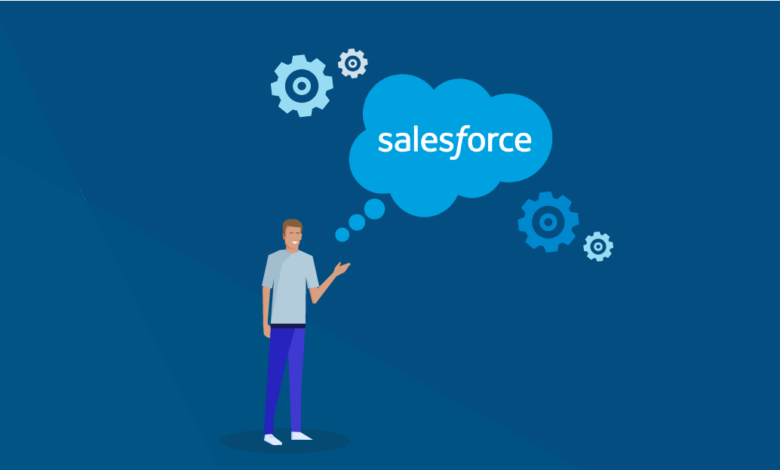What is the difference between Salesforce automation and CRM?

Often business and technical tools and solutions create confusion among their users. Salesforce automation and CRM is one of them. People have formed misconceptions about the software that they are the same and interchangeable at times. However, that’s a lie as both serve different aspects and solutions to their respective clients. Let’s take a quick recall of their differences and understand from where does this misconception formed?
Table of Contents
Where does the misconception form?
The key factor behind the misconception of both software lies in their similar attributes and features. Both CRM and SFA serve around stages of the customer lifecycle in a business. Although even after sharing likable attributes, both the system software consists of unique purposes and different business aspects.
On the one hand, Salesforce automation aims at the sales process of products and services. On the other side, Customer relationship management aims to manage customer relations to enhance the trust and loyalty between a business entity and a customer. So let’s jump deeper into the solutions.
What is Salesforce automation?
Salesforce automation is a software application that automates, initiates, and utilizes the interface between clients, prospects, and sales representatives. Not just clients and prospects, but the software also affiliates with pipeline management and sales management process to increase its credibility in a business. It includes managing contacts, generating leads and opportunities, and tracking and organizing other activities. The software performs all these functions with the help of several elements like sales pipeline, customer activity, sales team, order taking, interaction, and performance evaluation. One such example of these software is ConvergeHub that provides end-to-end solutions to build efficiency in the sales process.
Features of SFA
Following are the features of SFA software-
- Contact Management- A business needs to increase consumer engagement and build a strong business with potential customers. Although, the SFA tools enable you to do so via contact management. It connects with clients by keeping a track record of its customers to personalize their experiences.
- Pipeline Management-contact A SFA allows a user to track the sales pipeline from initial inquiry to closing sales. Eventually, it helps a sales team to determine trends and forecasting sales.
- Task Management- The task management of SFA centers around a seamless process that enables a sales team to streamline by creating reminders and tasks to follow the leads properly and keep track of its activities.
What is Customer Relationship Management?
A customer relationship management is a system software program that allows a user to track, analyze, monitor, and manage communication with potential customers. It develops strategies and technological features to receive customer lifecycle data to improve customer satisfaction. The software application mainly focuses on improved relationships to form customer loyalty. Many groups utilize the CRM program such as support, sales, customer success, etc.
Features of CRM
Following are the features of Customer Relationship Management-
- Customer management– CRM allows a user to track the client interaction information in its digital database software system. As a result, you get an opportunity to deliver great customer service on time and improve customer relationships simultaneously.
- Single location stored data– With many customer data on the website, it becomes essential to store them in one place. Although, CRM does it all for you. It automatically collects all customer-related activity at a single location to analyze what’s happening on their digital platforms.
- Streamline sales management– CRM uses the sales funnel to generate and close deals accurately so that a business can acquire the desired revenue and earn large profits.
Key differences between Salesforce automation and CRM
Now that you have understood both software’s different concepts and nice features. Let’s discuss their prominent differences and approach as well. Below are the listed distinction between SFA and CRM software applications-
- Salesforce automation aims at opportunity management, whereas Customer relationship management drives work management.
- SFA has activity lists within its accounts, whereas CRM visualizes and filters those activities listed in accounts carrying different goals.
- On the one hand, SFA provides actionable goals and tasks for every sales representative, whereas Customer relationship management binds by customer profiling data, including behavior data, purchasing history, etc.
- SFA records call and lead generating activities, while CRM tracks customer communication.
- SFA keeps contact information records, whereas CRM stores e-commerce communication and account data.
- The Salesforce automation manages and tracks appointments, and CRM tracks the feedback of sales and marketing activities.
- SFA handles workflows and pipelining activities, and CRM scans services and supports customers’ interactions.
Final reflection
These are the basic differences between the SFA and CRM software applications. Although many users still debate its concepts, their approach creates a distinction among them. On the one hand, SFA and CRM surround near customer lifecycle sharing similar attributes; on the other side, their accountability sets them apart. Undoubtedly, both have different approaches and distinct functions. Hope the write-up has helped you understand their quarrel clearly.




